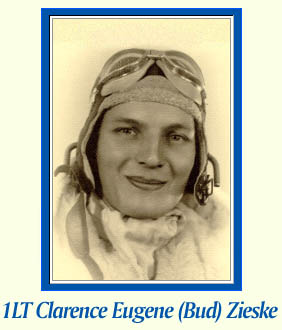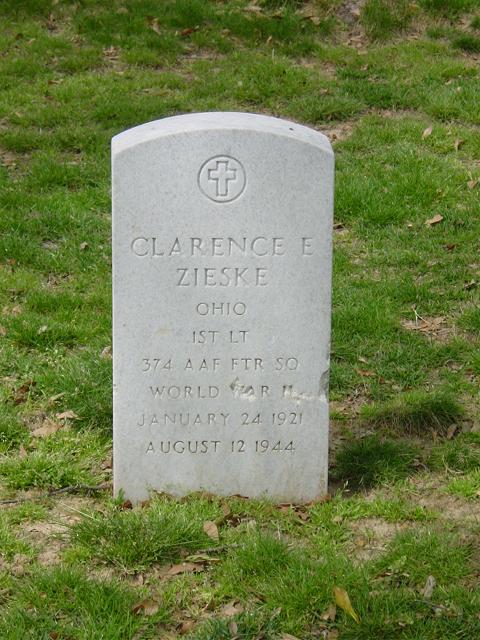Courtesy of His Son Joseph Mack Zieske Ormond
And The American World War II Orphans Network
My father was born January 24, 1921. I know little about his childhood. He graduated with a BS Degree in Chemical Engineering from Ohio State University in 1942. He was a Colonel in the ROTC and was Senior Football Manager at Ohio State. In July, 1942 he was appointed a Second
Lieutenant in the Field Artillery Reserve. He was called to active duty on July 23, 1942, and reported to Ft. Bragg, North Carolina. From Ft. Bragg he was assigned to the Tank Destroyer School at Camp Hood, Texas as an instructor in offensive and defensive demolitions.
A letter sent to my mom on September 5, 1942, said: ” I found out last night that it is likely that I shall never see actual combat service in the war but will be kept here in TD School as an instructor. Now isn’t that a hell of a note. Here I am willing to fight my head off for just a crack at the axis and they want to stick me here in Texas.” Later in the same letter, “My gosh! What will I be able to tell our grandchildren when they ask me what I did in the War. Only that I sat in Texas picking cactus needles out of my seat”
In a letter dated September 24, 1942, “Give me a big gun that really wrecks the place when a shell is fired. I’m not really that heartless, but I do delight in seeing things fly up in the air. That is why I liked the demolitions I was teaching. I’m just a little kid at heart, I guess.” (He had been temporarily assigned to Officers Tactical School).
Fed up with Tank Destroyer School, he requested a transfer to the Army Air Corp on February 16, 1943. On May 20, 1943, my mother took a train from Columbus, Ohio to San Antonio, Texas, where they were married on May 22, 1943. On May 26, 1943, my father started preflight training. On July 14, 1943, he soloed for the first time and was in love with it (from my mom’s journal). My father was chosen by fellow cadets to speak for them at the graduation banquet.
He completed his advanced flight training at Eagle Pass Army Air Field, Eagle Pass, Texas on January 7, 1944. He completed his training in Tallahassee, Florida and awaited shipment overseas. My mother went back to her parents’ house in Columbus, Ohio to await his return and my birth. He was transferred to his point of embarkation at Camp Kilmer, New Brunswick, New Jersey and shipped out to England.
My mother received about 11 letters from my father in England. In a letter postmarked July 18, “What is the latest news on our new adventure? I hope you and junior are getting along fine. If he kicks too much we’ll have to speak to him about it when he grows up.” The last letter was dated August 11, 1944, in which my father kidded her about putting on a little weight in the picture she sent. She was 8 months pregnant with me at the time. The following day he was killed.
My father had completed 8 combat missions and had 39 hours of combat flying time. While on a dive bombing mission, his P-51 fighter plane was hit by anti- aircraft fire and crashed near the airfield of Rosiers, southeast of Amiens, France. The missing air crew report states that he was seen to bail out of his plane about 100 ft above the ground and hit the ground slightly behind his plane. His chute never opened.
He was originally buried in grave 50 in the village cemetery of Mehaircourt, France. He was later reburied at Arlington National Cemetery beside his older brother, First Lieutenant Vernon Zieske, a P-47 pilot who was KIA on January 5, 1945.
My mother received the telegram reporting my father was missing in action on August 27, 1944. Her expected delivery date was the following day, August 28. On October 9th, she received notification that my father had been Killed in Action. I was born that evening. My father’s death and my birth appear in the same newspaper article.
My mother never quite fully recovered from my father’s death. She remarried in 1947 and I was adopted by my stepfather. Though my mother talked about the War years often, my father’s letters and pictures remained locked up in a suitcase out of sight until I was nearly 40. At that time, she handed them to me at a family gathering for my sister’s wedding. After a cursory look, they remained hidden away in my own closet until I began transcribing them after seeing “Saving Private Ryan.” The horror of the deaths in that movie allowed me to begin to face the pain of my father’s death. A few months later, I found AWON and in a very short time I have become very in touch with my father and the impact that his death had.
I honor him for the choice that he made to fight in the war. It takes young men with a sense about what they want to be able to tell their grandchildren and who like to blow up things to fight for those freedoms that we all hold dear.
ZIESKE, CLARENCE E
1ST LT 374 FTR SQ 361 FTR GP A F
DATE OF BIRTH: 01/21/1921
DATE OF DEATH: 08/12/1944
BURIED AT: SECTION 11 SITE 848
ARLINGTON NATIONAL CEMETERY
Michael Robert Patterson was born in Arlington and is the son of a former officer of the US Army. So it was no wonder that sooner or later his interests drew him to American history and especially to American military history. Many of his articles can be found on renowned portals like the New York Times, Washingtonpost or Wikipedia.
Reviewed by: Michael Howard


